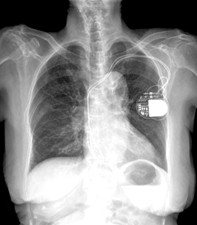Peer Reviewed
ECG education
Is this pacemaker working? Can you tell from the ECG appearance?
Abstract
A 77-year-old man comes to see you accompanied by his daughter. He has had a fall this morning. He thinks he lost consciousness because he recalls feeling suddenly weak and then waking up, luckily on the carpet. He has no injuries. He is not well known to you so you take a full history and examination. You note he has a permanent pacemaker in his left chest wall, and he is sure this is not a defibrillator. You perform an ECG.
Key Points
- The basic types of permanent pacemakers are single chambered, dual-chambered and biventricular.
- The ECG can provide valuable information about pacemaker function and interaction with the patient’s heart.
- Both the atrial and the ventricular rhythms and their interaction or lack thereof need to be considered when assessing a patient with a pacemaker.
- Battery and lead failures are rare causes of permanent pacemaker malfunction.
- Incorrect earthing of house wiring to house plumbing may cause pacemaker inhibition.
- Mobile phones can interfere with pacemaker function and should be kept more than 20 cm away from a pacemaker and not be placed in the top left-hand pocket of a shirt.
Purchase the PDF version of this article
Already a subscriber? Login here.

